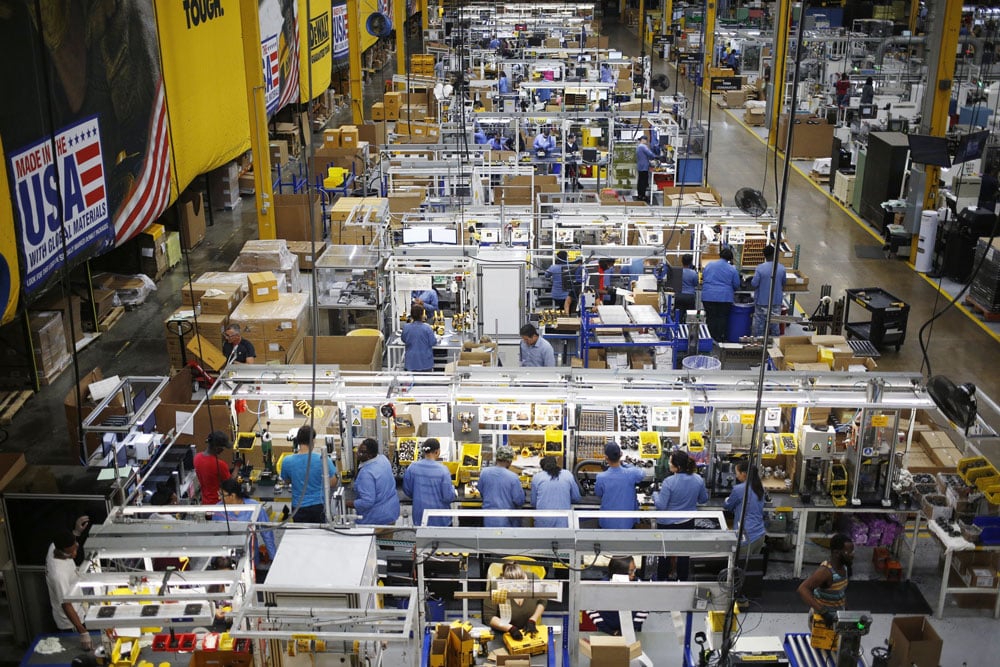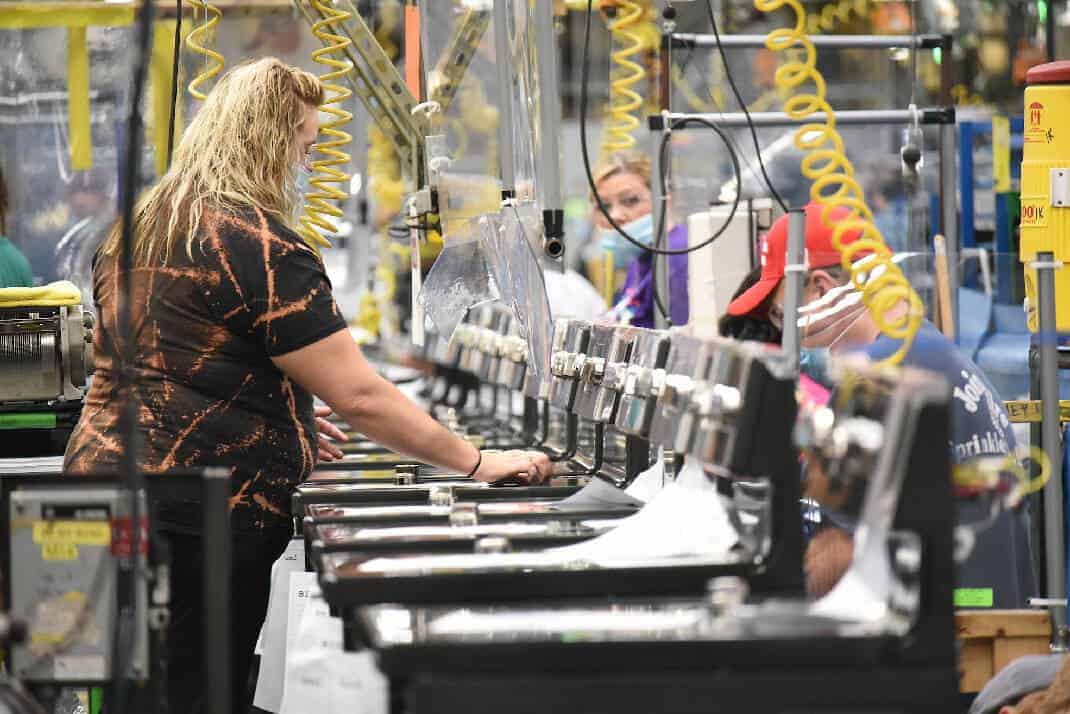It’s not easy being a job seeker these days. Technological advances, international competition, and workplace automation have resulted in stagnant wages and fewer opportunities for low-skilled workers. This makes workforce development more important than ever before.
Workforce development takes a “people-first” approach to business development. This approach offers strategies to improve an individual’s potential in the workplace and their career trajectory. Workforce development not only improves their prospects in life, but also leads to downstream benefits for businesses.
In this article, we’ll take a deep dive into the concept of workforce development and will discuss how it works and how you can realize its many benefits.
How Do You Define Workforce Development?
What is workforce development? A simple working definition of workforce development describes the concept as “employment initiatives offered by agencies and government offices” that help create, sustain, and retain a viable workforce. The objective of workforce development is to create economic prosperity for individuals, businesses, and communities.
Workforce development focuses on an individual’s ability to grow their skills and develop the tools they need for business success. In other words, workforce development trains individuals to be more productive and prosperous in the workplace, which benefits both the employer and the worker.
Why Your Business Needs Workforce Development
A recent study conducted by Accenture found that 62 percent of C-level executives were unsure how to develop their workforce in an increasingly digital economy. In fact, the authors of the report go on to state that over $3 trillion of future revenues may be lost due to inefficient or ineffective workforce development.
Whether your workforce is on a manufacturing floor, auto garage, medical clinic, or office tower, you must continually invest in training your employees. Otherwise, you may find that they’re unequipped to handle the problems of the future. As a result, your customers, vendors, or clients may take their business to a more forward-facing firm.
At its core, workforce development is about maximizing the potential of your employees and providing them with the opportunities to effectively handle problems. When an employee feels like they’re valued and trusted, they’re more likely to stick around for the long haul.
Benefits of Workforce Development
The benefits of workforce development are two-pronged: on the one hand, the employees themselves stand to gain from retraining, and on the other hand, the employers also enjoy a higher-skilled team. Below, we’ve listed some of the main benefits of employee development.
- Increased job satisfaction
- Lower turnover rate
- Increased operational efficiency
- Improved productivity
- Enhancements in innovative thinking
- Proactive, not reactive, problem solving
An empowered workforce is one which feels like an asset to their employer. However, when an employee feels neglected or ignored by their management team, they may start looking for employment elsewhere. Plus, it gives employers the opportunity to communicate with their staff about best practices and how they can move forward in the industry together.
Examples of Workforce Development
Workforce development isn’t a “one and done” initiative to train your employees. Rather, it’s an ongoing process of educating and empowering your workers so that they can tackle the workplace problems of tomorrow.
To help you get a better idea of what workforce development looks like in practice, we’ve provided a few examples below.
Data Collection and Analysis Reviews
Today’s workplace is dominated by key performance indicators (KPIs) and metrics designed to assess employee performance and keep track of progress. Further, with digital sensors and web-assisted record-keeping, it’s never been easier to maintain a centralized database of employee KPIs.
First, allow your employees to access their KPI data from a company server. Then, schedule a face-to-face monthly, bi-monthly, or quarterly review where you discuss their performance and how they can improve.
Skills-Based Training
Take, for example, a scenario in which you operate a customer support call center. Rather than manually receiving phone calls from customers, your team now must make outgoing calls, record inquiries, and research solutions to problems on the fly. To do this, they must be trained in the latest technology.
Hosting bi-weekly or monthly computer literacy courses would go a long way toward maximizing the potential of your workforce at a call center. Plus, hosting a skills-based training program can help your employees acquire the certifications they need to be competitive in the job market.
Relationship Building
If your workforce primarily consists of members of at-risk groups, then it might make sense to host regular workshops based on developing interpersonal skills. Knowing how to resolve conflict, communicate clearly, manage stress, and empathize with others can go a long way toward boosting employee morale and overall job satisfaction.
Continuing Education Programs
Many successful companies, from thriving small businesses to Fortune 500 corporations, invest in their loyal employees’ continuing education. Show your employees that they are valued by offering to subsidize the cost of work-related certificates, diplomas, degrees, and other relevant credentials.
Workplace Development Best Practices
The best workforce development programs have a well-thought-out strategy for training employees in the most efficient and user-friendly way possible. For this reason, we’ve highlighted some of the best practices to ensure you get the most out of your company’s development program.
Leverage Industry Expertise
You don’t have to tackle workforce development alone. Fortunately for you, you can lean on established industry experts who can walk you through how to retain and retool your workforce for superior results. Many firms offer workforce development solutions to help you bring in new talent and HR professionals who can train your workforce to meet the demands of tomorrow.
It’s About Learning
Remember that workforce development is built around learning rather than training. Typically, when you announce to your employees that they must undergo mandatory training you will receive sighs and a general lack of enthusiasm. However, positioning developmental education as a learning opportunity often yields higher engagement.
Workforce learning can take many forms, including brainstorming sessions, online e-learning, one-on-one mentoring, or individualized performance reviews.
Transparency Is King
From the beginning, make sure you transparently communicate your expectations for the development program with your employees. If you spring additional training on your workforce without clearly explaining why, the program may backfire and leave your team distrustful of management’s long-term plans.
Explain how long the development program will last, what they can expect, and, most importantly, let them know that they will be compensated for their time. Also, let your employees know that you’re receptive to feedback and want to find out whether the program made a tangible impact on their performance.
Let Your Employees Take The Wheel
Don’t waste your time or resources teaching your employees what they already know. This can build resentment and animosity between employers and employees.
Instead, let your employees engage in self-directed learning. This way, you let the development program meet your employees at “their level” and speed up the process by not teaching redundancies. Further, don’t schedule a completion time for your employees—rather, allow them to learn at their own pace.
Help Close The Skills Gap
A study conducted by McKinsey & Company found that 40 percent of American business leaders are experiencing difficulty finding employees with in-demand skills, even for entry-level positions. An additional 20 percent of employers claim that most of their new talent is underprepared for the job that they’re entering.
The discrepancy between the demand for skilled talent and the supply of talent available represents a “skills gap.” This gap has widespread negative effects on economic growth. However, harnessing the power of this untapped resource can be the difference-maker in your business’s future success.
Don’t wait around for the skills gap to close on its own. Instead, take matters into your own hands by providing extensive onboarding and regular workforce development programs. This way, your workforce can adapt to the economy’s changing demands. Or, consult industry experts to handle workforce development for you.
Position Your Company For Tomorrow’s Market
Research shows that employees are feeling more unsettled about their jobs than ever before. For instance, a recent study by Deloitte found that 71 percent of Millennial and Gen-Zers plan to leave their jobs in the next two years due to discontent with how their leadership skills are being developed.
By investing in ongoing workforce development, you can retain your top talent and improve your business’s standing in our ever-changing economic landscape. But remember, it’s crucial that you keep your employees—the learners—at the center of the development program by letting them choose where, how, and what to learn.





